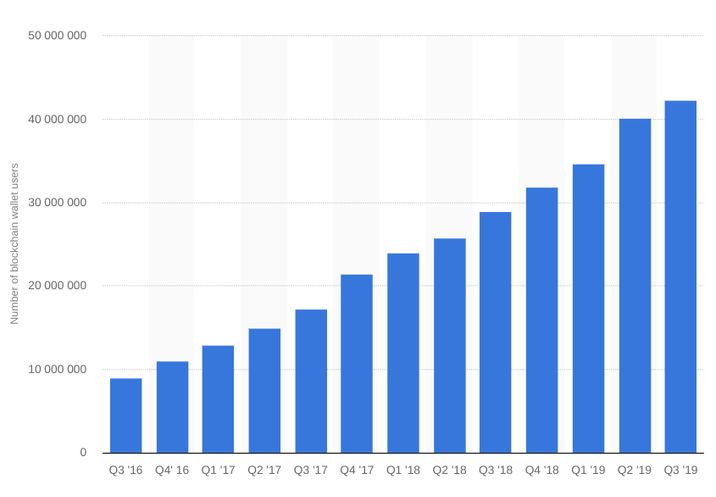Core, Coins and Crime - The Crypto Wallet Journey

Is it just me, or does it feel like you’ve had hundreds of cryptocurrency wallets?
Every time I find a new coin, hear about a new feature or want to liquidate some funds, I seem to create a new wallet. And it’s been this way for years. In other words, my cryptocurrencies are forever on the move.
For example, in the beginning, Satoshi Client did everything we needed. Until Namecoin appeared. Then Bitcoin actually became valuable, so it was time for a more secure solution. Now, we’re going mobile. I can’t hate on cryptocurrency wallets. They are a necessity and they have to continue evolving. So instead of getting upset, I decided to reminisce a little, to take a step back and see how far cryptocurrency wallets have come.
And they’ve come along way, from the first Satoshi creation to over 40 million wallets on Blockchain.com alone.

First Bitcoin Wallet
Satoshi Client, now called Bitcoin Core was the first wallet designed by the mysterious inventor of Bitcoin. From its 2009 launch, Bitcoin wallets were attached to the full master node meaning users were required to download and maintain the entire blockchain to access inbuilt wallet generation
Users can still do this, but in the early days, it was the only way to interact with the blockchain. To begin with, this was not a problem as there were minimal history and data stored on the distributed ledger. But as Bitcoin grew, it soon found scalability issues as Ethereum creator Vitalik Buterin explains in 2012:
“Because it is a full node, the client must download the entire (currently 6 gigabytes) blockchain to operate, which can take up to a few days the first time you start the client and several minutes to an hour every time you start the client afterwards if you do not keep it running constantly.”
The blockchain download now exceeds 250 gigabytes and only continues to grow as more data is recorded. The original wallet is somewhat recognizable holding the same basic functionality as we still see in all cryptocurrency wallets ten years later.

A single wallet to send and receive Bitcoin which you could even mine from your home PC.
Multiple Cryptocurrency Wallets
In the following years, others were quick to see the potential of Bitcoin. Developers started to fork the network, facilitating new coins with specific wallets like Namecoin and Dogecoin.
Although the original core wallets served the industry faithfully for years. Growing databases combined with multiple assets required a smarter wallet. Multicoin desktop wallets were introduced to make life simple. Operating with the same basic functionality but with two marked differences. Firstly, users could store multiple coins or private addresses in one neat wallet platform. Secondly, there was no longer a need to download and sync the whole blockchain. Users could now transact without running a full node.
Security Becomes Paramount
The exponential growth of active addresses from 2011 to 2014 shed light on a serious problem. Private keys were always stored on a desktop file in a file labeled ‘wallet.dat’. There are countless stories about users accidentally deleting this file or malware designed to search for the file.
Plus MT. GOX experienced two hacks in 2011 and 2014, during a period where the infamous exchange handled 70% of Bitcoin transactions worldwide. Custodial wallets and exchanges, like Coinbase, started to offer alternatives. Breaking down the door to the mainstream making it easy for anyone to buy and store cryptocurrency securely. Coinbase has gone on to have over 30 million users and trade more than $150 billion.
Custodial wallets and exchanges, like Coinbase, started to offer alternatives. Breaking down the door to the mainstream making it easy for anyone to buy and store cryptocurrency securely. Coinbase has gone on to have over 30 million users and trade more than $150 billion.
While users can't accidentally expose or delete private keys with platforms like Coinbase, you don’t gain the decentralized benefits of cryptocurrency. The alternative? Hardware wallets. A single-purpose computer in an isolated environment to protect private keys. Amusingly, first named Piglet. A crowdfunding campaign preceded the 2014 release of the product we now know as Trezor. Everyone could have secure, recoverable, easy to use wallets without entrusting 3rd parties.
Cryptocurrency wallets gaining sophistication
Bitcoin hit a tidy milestone in 2019 - 400,000,000th transaction.. and it didn't need permission from anybody. With an average of 350,000 daily transactions, you feel there is still a way to go before we see numbers representing mainstream adoption.
The race continues to add more sophisticated features day by day to make using cryptocurrency more accessible. From mobile mulitcoin wallets like Coin Space, to Fintech banking integration, to DEX connection. For example, Coin Wallet offers users security and privacy on the move. Wallet apps like this are growing in popularity as more vendors start to accept crypto payment methods.
Other hardware wallet options now boast in-built exchanges or connections to decentralized exchanges like BinanceDEX. This gives users the ability to trade an abundance of coins without entrusting funds to a 3rd party.